Seasons of Change: An Ode to Fall
This photo essay captures the beautiful transformation of leaves as the seasons transition from fall to winter. The change from lush greens, to shades of red, orange, and gold, tells a story of renewal and the texture that autumn brings at St. Lawrence University. I invite viewers to pause and appreciate the wonders of nature we see every day. Each tree has its own process and story to tell. Unfortunately, trees cannot speak, but these images tell it for them. At the end of this photo essay, check out the timelapse videos of several trees around campus to see the transformation from the past month!
For this project, I took pictures at the same few locations on campus twice a week. I focused on primarily sugar maple trees as they are the most planted around campus and have really lovely color changes. Also, I got to observe the difference in the timing of the leaves changing colors. I started taking photos on October 1st and ended on October 29th. Pictures were not taken from October 15-22 as it was mid-semester break and I could not access the camera. Apart from the beauty, it's important we understand why this happens.
Why do the leaves change colors?
There are 3 classifications of leaf pigments, these pigments are what color the leaves. First, carotenoids, which produces yellow, orange, and brown colors. Then anthocyanins, which produces red and purple colors. Lastly, chlorophyll, which produces the basic green color. Chlorophyll is key in photosynthesis, as the chlorophyll captures the energy from the sun which is then used to make food for the tree. During the growing season, which is usually late spring to early summer, chlorophyll is being produced and broken down from producing food, giving the leaves their green color. Then, as the lengths of the nights increase and there is less sunlight, chlorophyll production slows and eventually stops. This destroys all the remaining chlorophyll. Without chlorophyll, the other pigments are unmasked giving the leaves their autumn colors. So, yes, the other pigments are there all along, the chlorophyll just covers them up.
Different species of tress naturally have more or less of one pigment, making their leaves different colors in autumn.
-
Oaks: red, brown, or russet – they also change later than other trees
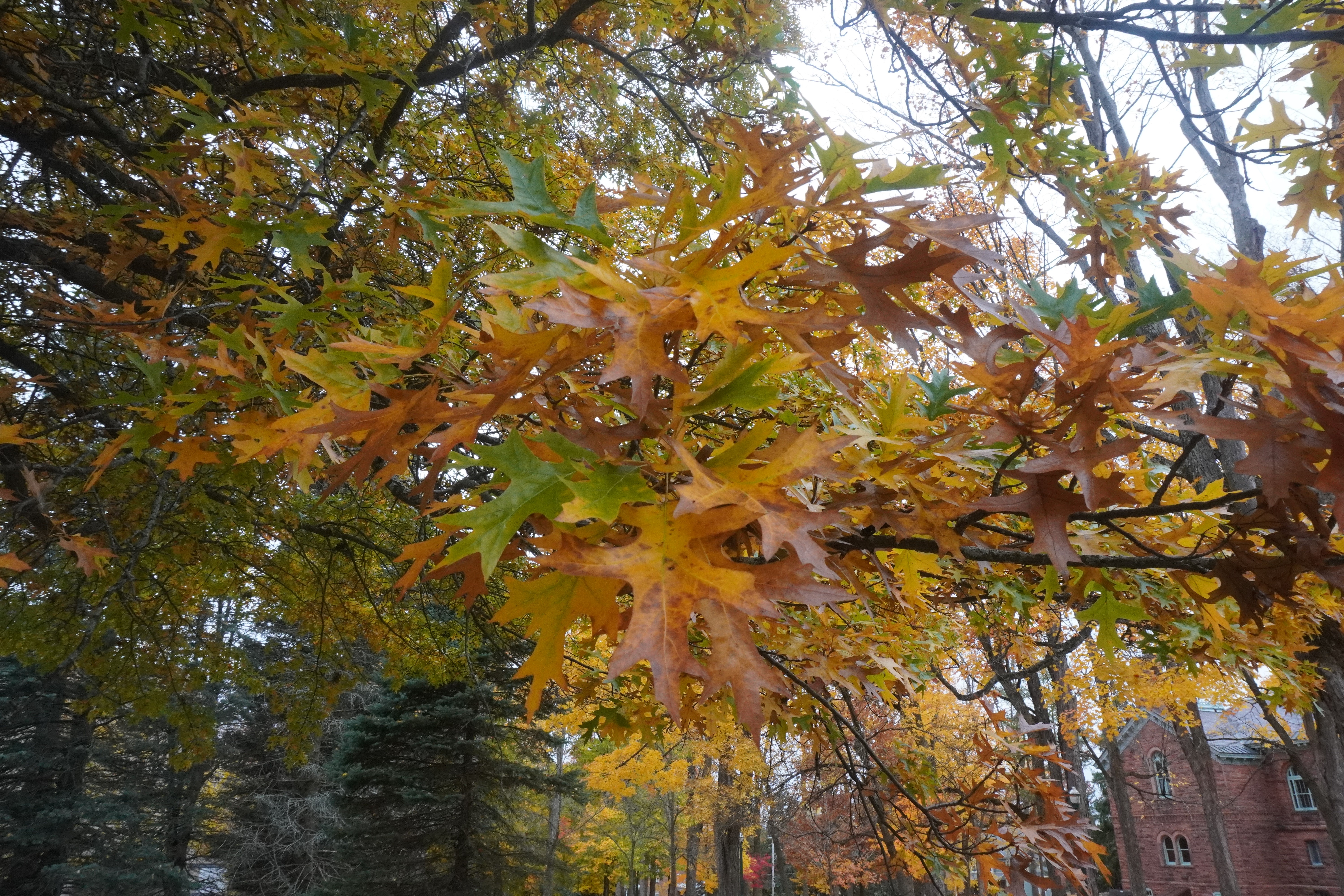
-
Hickories: golden bronze
-
Aspen and yellow-poplar: golden yellow
-
Dogwood: purplish red
-
Beech: light tan
-
Sourwood and black tupelo: crimson
The color of maples leaves differ by species:
-
Red maple: brilliant scarlet
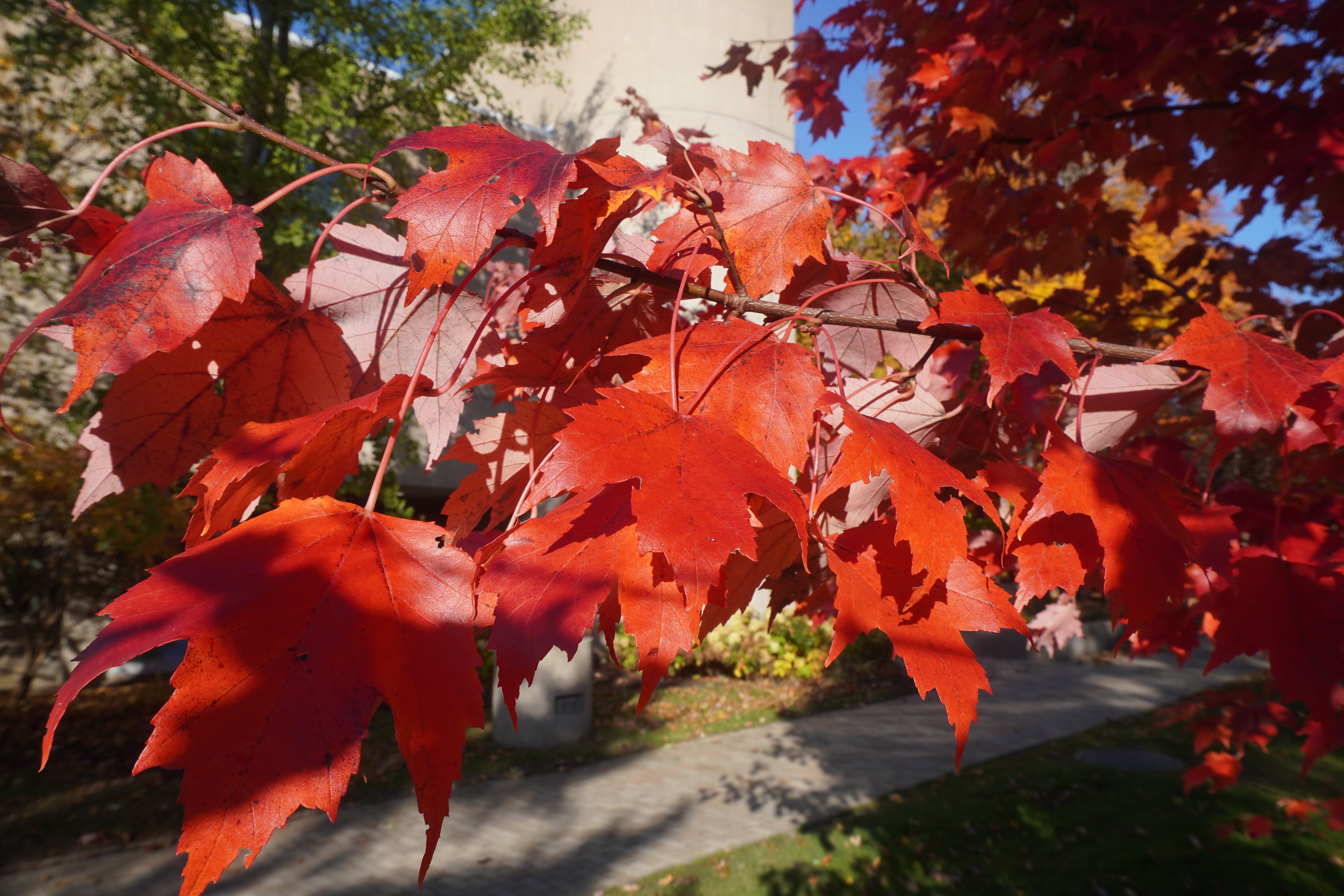
-
Sugar maple: orange-red or yellow
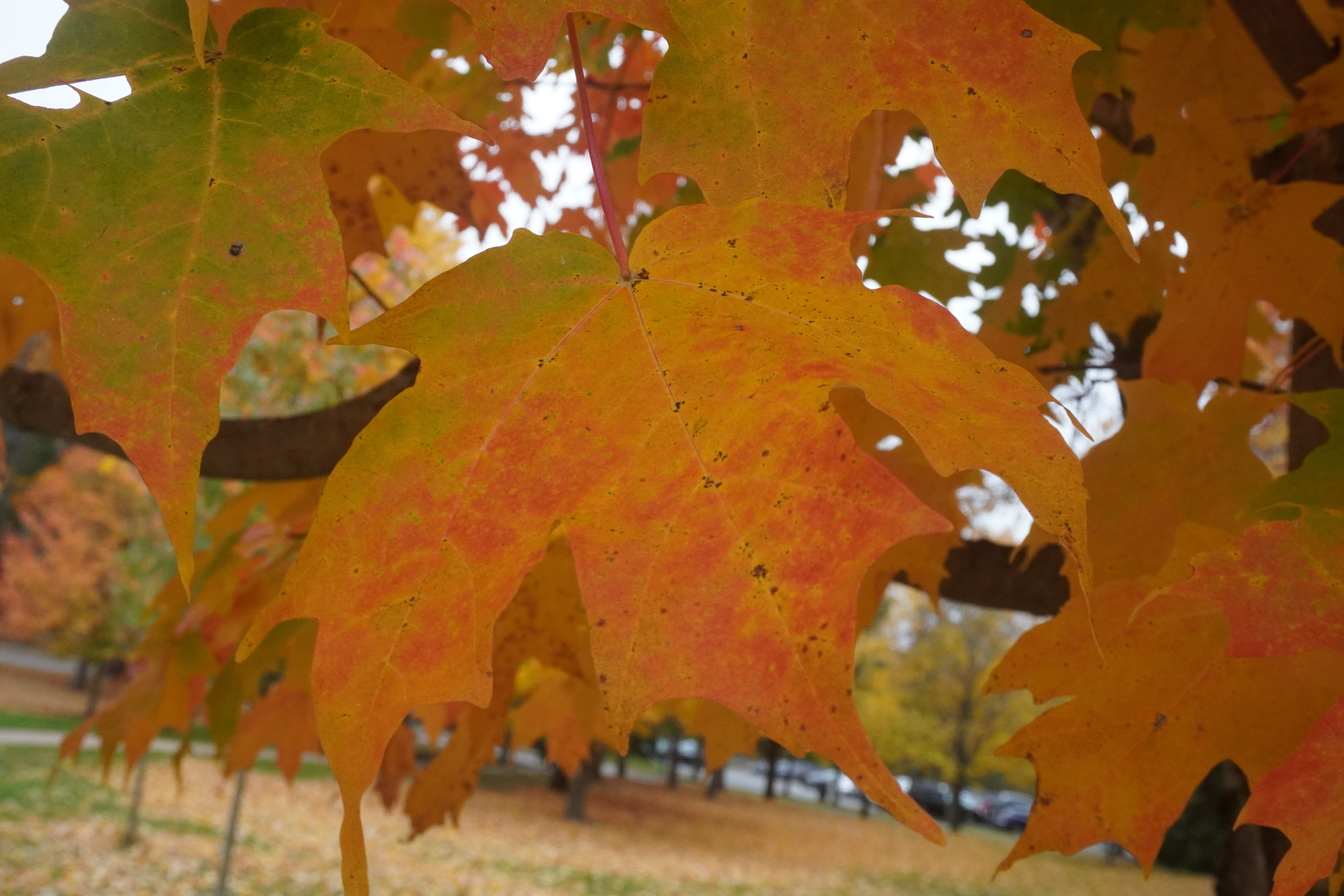
-
Silver Maple: yellow to red
-
Black maple: glowing yellow
-
Striped maple: almost colorless
What affects the timing of leaves changing?
While seeing an early color tree change is very pretty, it doesn't mean that it’s a good thing. The biggest factor that affects when the leaves change colors is stress on the trees. As Paul J. Hetzler mentions in his The Colors of Distress blog post, trees that change color earlier than others are actually in distress; "Premature leaf color is a reliable sign of extremely poor health . . . the worse a tree's condition is, the sooner it begins to turn." To read more about the distress in trees, check out Paul's blog: https://www.natureupnorth.org/justmynature/paul-j-hetzler/colors-distress
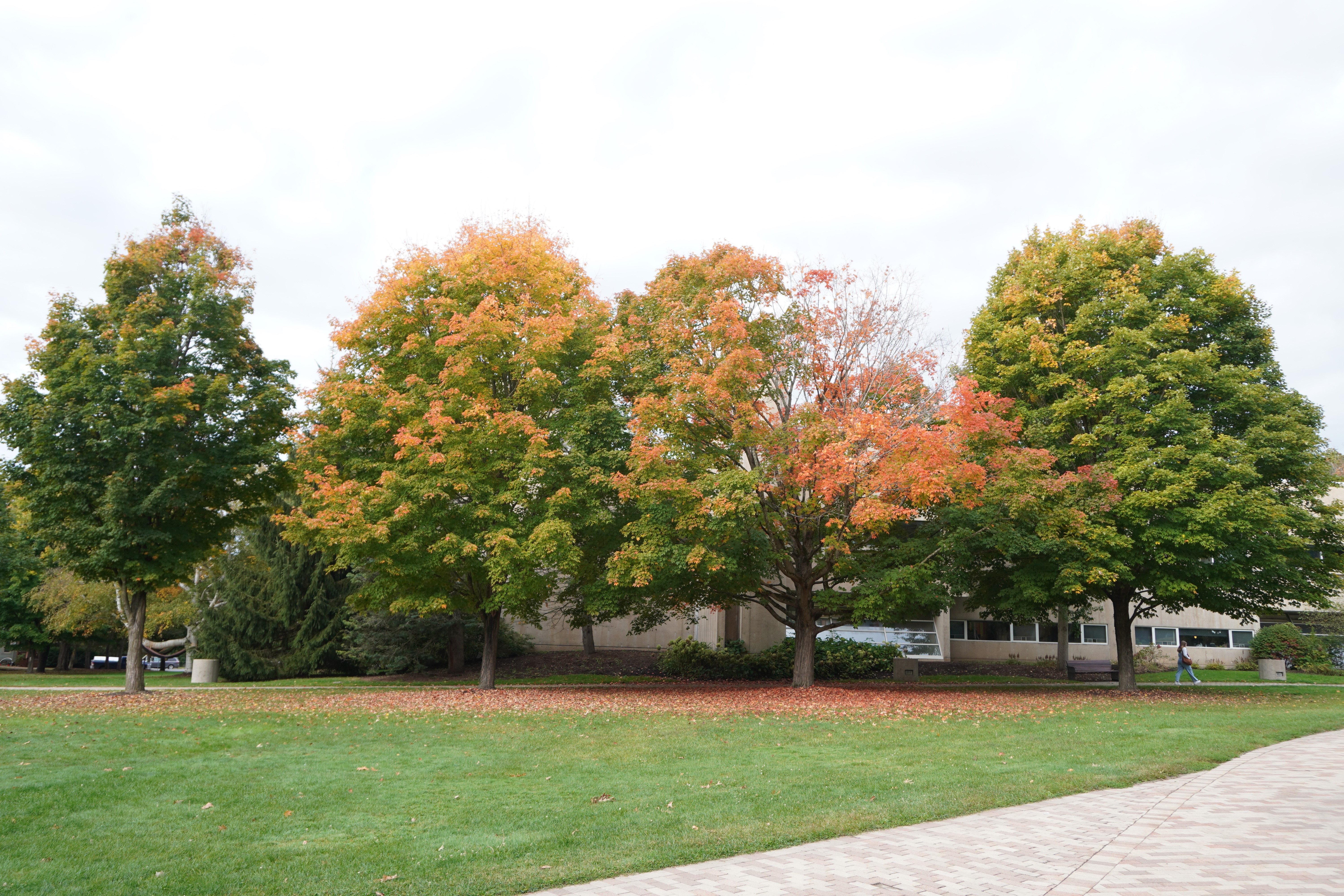
These 4 trees, all Sugar Maples outside the Owen D. Young Library at St. Lawrence University, are changing colors at different rates despite being placed in the same area. This picture was taken on October 8th.
The color difference is based on temperature, sunlight, and moisture. As I mentioned, cool nights promote anthocyanin production which gives us the vibrant red colors. Sunlight is needed for all leaf pigments, and proper soil moisture throughout the growing season, meaning no droughts or excessive wetness help to maximize pigment production.
-
Summer drought conditions stress trees, causing them to change colors and lose their leaves faster.
-
Flooding and heavy rains and winds can cause premature changing. For example, the trees at the Raquette River in Potsdam had already lost their leaves due to the excessive flooding at the time of these photos.
The Difference in Perspective
While viewing these images, make sure to think about the idea of perspective. Some photos taken up close may not capture the full essence of what is going on. Notice the differences between what a zoomed-in picture versus its full counterpart tells you about how far into the fall season it is, or if the trees are healthy.
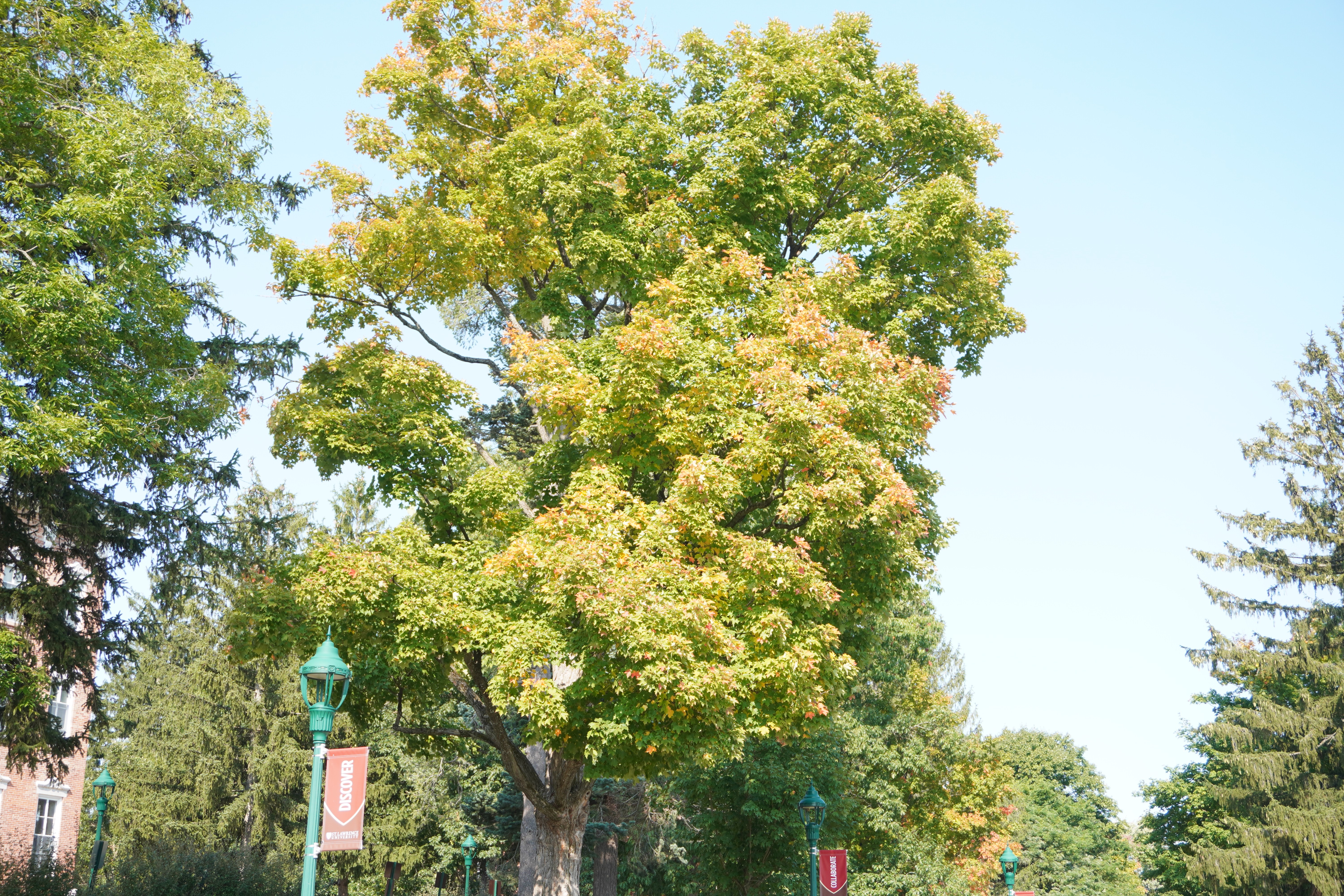
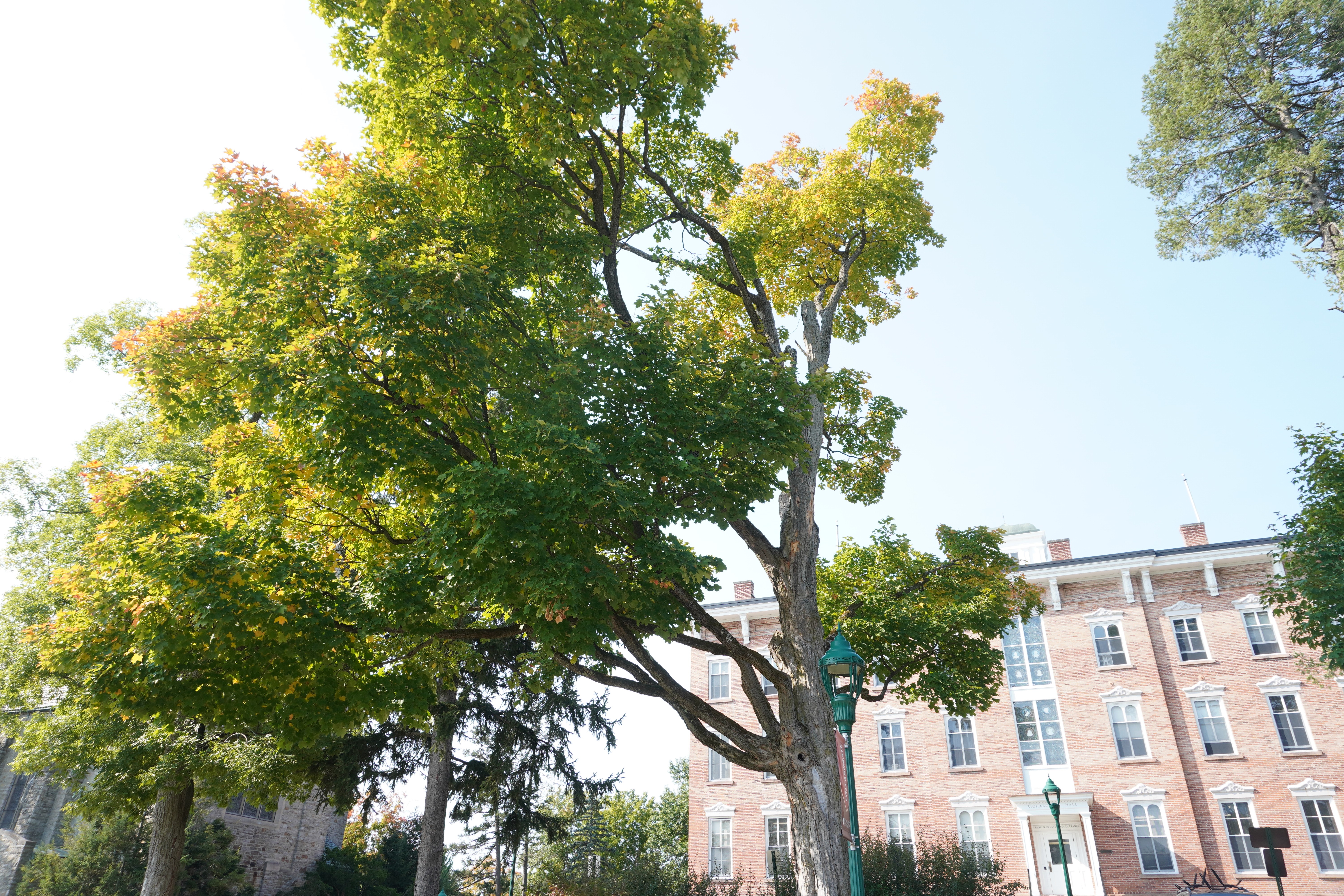
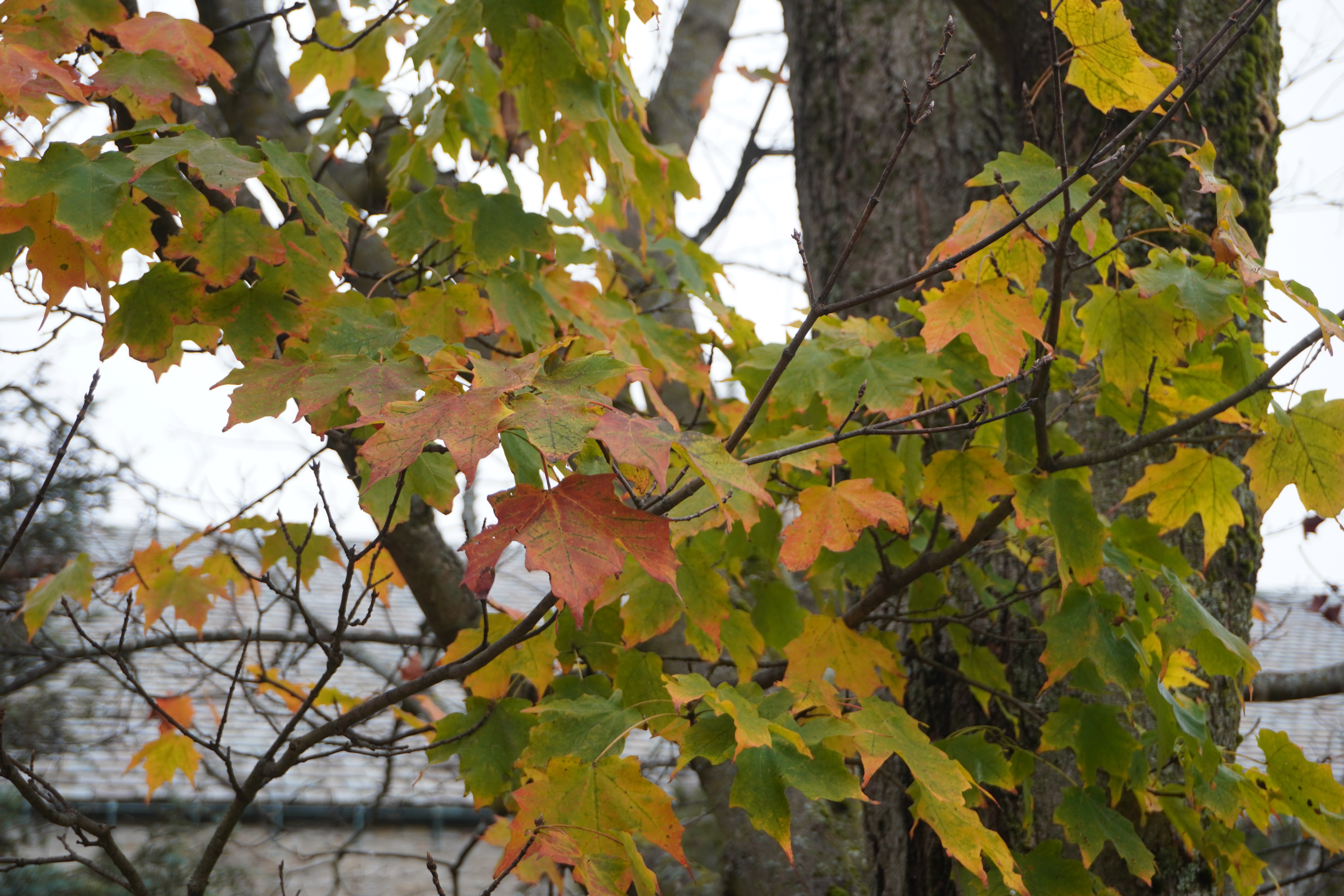
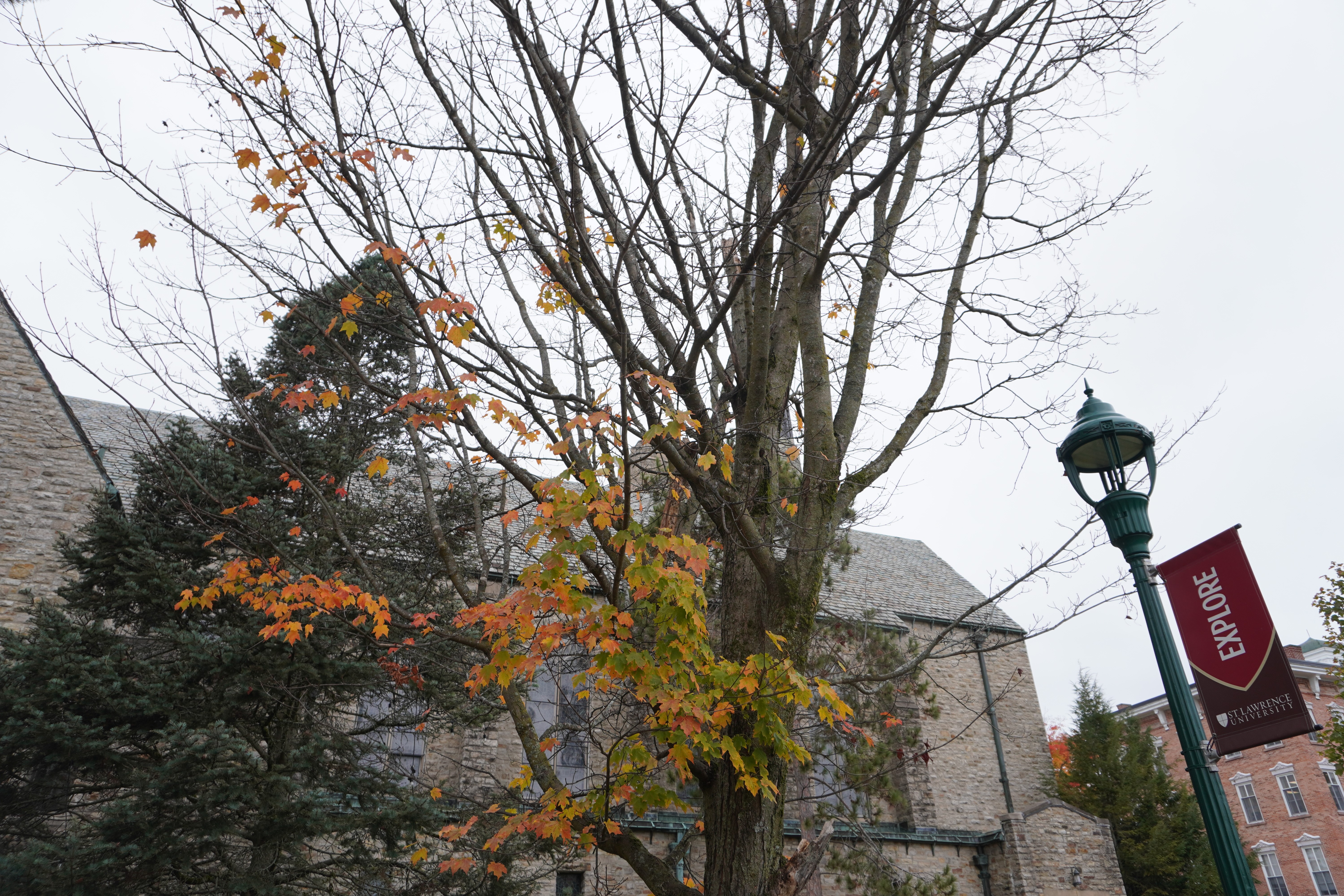
These two sets of pictures of a Sugar Maple tree by Richardson Hall highlight the importance of perspective. The first set was taken on October 3rd, the second set was taken on October 15th. From different angles these pictures make the first look completely different, leading people to make false assumptions about the time of year, the rate of change, and the overall health of the tree.
A Note to the Viewer
I hope you enjoy these photos as I definitely enjoyed taking them. I took these photos on a Sony ZV-E10. Next year I recommend you take a time lapse of the trees in your area changing, to learn about the trees health and really see the color change overtime!

